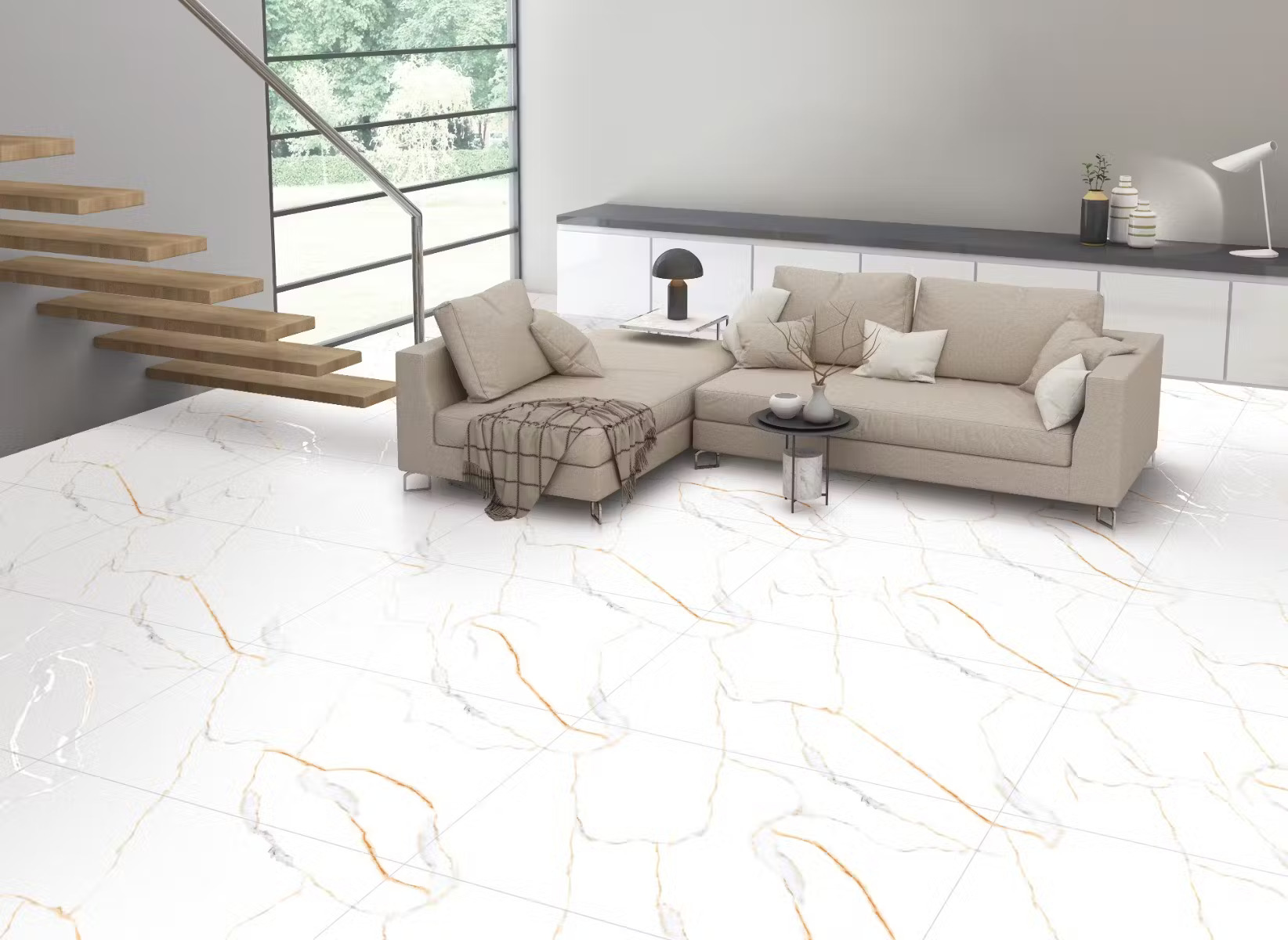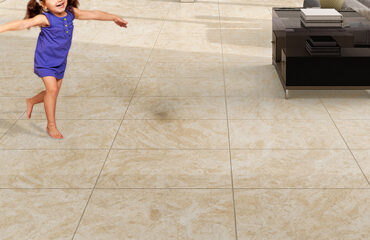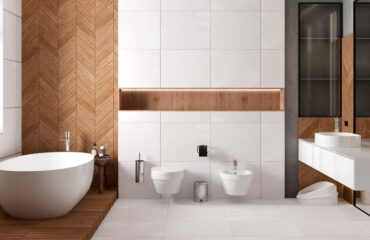Introduction
This, therefore, has much to do with aesthetics and issues of durability, as well as safety, regarding the kind of flooring tile chosen for an area. With varying material, design, and finish, each type of tile inherits different merits and flaws. We will review some of the main tiles used for flooring and discuss those which have a better performance regarding non-slippery surfaces.
1. Ceramic Tiles
Ceramic tile is one of the most popular and universal floor coverings. Get Best Tiles in Delhi from Antica Ceramica.Cooked from natural clay at extremely high temperatures, this type of tile becomes quite strong, waterproof, and exists in a very broad color, shape, and design palette.
Pros:
Durability: Ceramic tiles resist a lot of foot traffic and are long-lasting.
Variety: Available in many styles, including patterns that mimic wood, stone, or marble.
Cost-Effective: Generally more affordable than other types of tiles.
Low Maintenance: Easy to clean and maintain.
Cons:
Porosity: Unglazed ceramic tiles, sometimes, turn out to be porous in nature and require being sealed to prevent them from getting stained.
Slipperiness: Glazed ceramic tile may become slippery when damp or wet.
Best Use: Ceramic tiles are ideal for kitchens, baths, and living areas. If it’s being used in wet areas, though, choose textured or matte finishes for a less slippery surface.
2. Porcelain Tiles
Porcelain tiles are a type of ceramic tile. However, they use denser clay and are then fired at higher temperatures. Antica Ceramica is the Best Floor tiles Showroom in delhi if you are making a plan to buy a Procelain Tiles. This makes them more hard-wearing and less porous than regular ceramic tile.
Pros:
Water-Resistant: It’s very resistant to water and stains; hence, it can be used in bathrooms and outdoors.
Durability: Very hard and suitable for high-traffic areas.
Variety: They also come in a range of designs, from those mimicking natural stone to wood and concrete.
Cons:
Cost: These are slightly more expensive than ceramic tiles.
Installation: It is much denser, so it might be more difficult to cut and lay down.
Best Use: With their durability and ability to repel water, porcelain tiles are ideal for bathrooms, kitchens, and even outdoor areas.
If you need non-slip options, select matte or textured finishes.
3. Natural Stone Tiles
Natural stone tiles, such as marble, granite, limestone, slate, and travertine, bring a unique and luxurious look to any space. Each piece is unique due to its natural formation, making it a preferred choice for high-end interiors.
Pros:
Aesthetics: Offers a timeless and elegant look.
Durability: Some types, like granite and slate, are extremely durable and long-lasting.
Natural Beauty: Adds a unique, natural texture and appearance to floors.
Cons:
Maintenance: Some stones, like marble and limestone, are porous and require regular sealing.
Cost: Natural stone can be expensive.
Slipperiness: Polished stone surfaces can be very slippery when wet.
Best Use: Living rooms, hallways, entryways. When used in a bathroom or any other high-moisture area where the floor may get wet, textured finishes, such as honed or tumbled stones, will help minimize the risk of slipping.
4. Vinyl Tiles
Vinyl tiles are Artificial material that is fast gaining ground because of its affordability, ease of installation, and varied designs. Some forms of LVT can even replicate wood or stone natural looks.
Pros:
Affordability: generally less expensive than ceramic or porcelain tile;
Comfort: Softer underfoot compared to other tiles;
Variety: Available in a wide range of colors and designs.
Water-Resistant: Highly resistant to moisture; hence proper for kitchens and bathrooms.
Disadvantages:
Durability: Not quite as hard-wearing compared to ceramic or porcelain, thus easily scratched or dented.
Environment: TDI is an artificially fabricated material, probably not environment-friendly.
Best Use: Applicable for kitchen, bathroom, and basement use. If used for a non-slip surface, seek out vinyl tiles with textured finishes.
5. Glass Tiles
Glass tiles are sleek, modern, and primarily used for decorative purposes like backsplashes or accent walls, but can also be used in flooring in low-traffic areas.
Pros:
Aesthetic: Bright, reflective surface makes spaces seem bigger.
Water resistance: Not penetrable by water; hence, suitable for bathrooms.
Cons:
Slipperiness: Very slippery when wet, hence not very suitable for flooring.
Fragility: More apt to chip and crack compared to other tile types.
Best Use: Best used in bathrooms or as decorative accent pieces. If they are used on a floor, the surface should have texture to them in order to decrease slipping.
Conclusion
Some of the best non-slippery flooring tiles will incorporate ceramic, porcelain, natural stone, and vinyl options. Ceramic Tiles and porcelain tiles are well known for their durability and versatility while offering a host of designs and finishes, such as matte and textured surfaces, which provide a better grip. Natural stones, like slate and granite, are appropriate for flooring with nonslip characteristics due to the natural texture found within these stones. Another practical and relatively cheap option includes vinyl tiles, more so those with a textured finish. Your best bet in relation to non-slippery surfaces will ultimately depend on your specific needs; however, generally, the finest of all in terms of safety and style are usually textured porcelain and natural stone tiles.
Frequently Asked Questions
Q1: What are the different types of tiles available for flooring?
There are various types of flooring tiles that fit the bill for such an assignment. Ceramic tiles are made from clay baked at high temperatures; they turn out very hard, with good water resistance, and will serve in all sorts of designs and colors. Porcelain tiles are a subgroup of ceramic tiles; they are thicker and more impermeable to water and can be installed in places with high foot traffic.
Vitrified Tiles: Such tiles are made by mixing clay and silica. They are extremely hard-wearing and low maintenance, with special finishes like glossy and matte.
Natural Stone Tiles: There’s marble, granite, travertine, and slate. These give absolutely natural, luxurious looks but most of which would require sealing and frequent maintenance.
Cement Tiles: These are hand-crafted and vastly popular with bright and versatile patterns to give a unique look, sometimes requiring periodic sealing.
Glass Tiles: These are primarily used for decorative purposes only since they are excessively slippery and not often recommended for flooring.
Mosaic Tiles: These are small tiles made of glass, stone, or ceramic, normally used for highly detailed work.
Terracotta Tiles: Rustic, warm-toned tiles made from natural clay, suitable for outdoor spaces or traditional interiors.
Q2: What kind of tile works best for flooring?
The “best” tile will vary depending on what you require. For general purposes, porcelain and vitrified tiles are often considered the best due to their durability, low maintenance, and wide range of design options. For a luxurious, natural look, natural stone tiles like marble or granite are excellent choices.
Q3: Which of the tiles are non-slippery and hence safe to have as flooring?
Non-slip—hence safe for flooring—would be the matte-finished porcelain tiles, vitrified tiles with textured surfaces, or natural stone tiles such as slate.
This type of tile offers greater grip and is much less likely to cause slips, particularly in bathrooms and kitchens where the floor tends to be wet most of the time.









